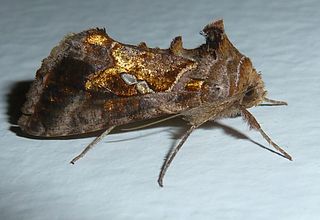
The superfamily Ichneumonoidea contains one extinct and three extant families, including the two largest families within Hymenoptera: Ichneumonidae and Braconidae. The group is thought to contain as many as 100,000 species, many of which have not yet been described. Like other parasitoid wasps, they were long placed in the "Parasitica", variously considered as an infraorder or an unranked clade, now known to be paraphyletic.

The Ichneumonidae, also known as ichneumon wasps, ichneumonid wasps, ichneumonids, or Darwin wasps, are a family of parasitoid wasps of the insect order Hymenoptera. They are one of the most diverse groups within the Hymenoptera with roughly 25,000 species described as of 2016. However, this likely represents less than a quarter of their true richness as reliable estimates are lacking, along with much of the most basic knowledge about their ecology, distribution, and evolution. It is estimated that there are more species in this family than there are species of birds and mammals combined. Ichneumonid wasps, with very few exceptions, attack the immature stages of holometabolous insects and spiders, eventually killing their hosts. They play an important role as regulators of insect populations, both in natural and semi-natural systems, making them promising agents for biological control.

Banchinae is a subfamily of ichneumonid parasitoid wasps containing about 1,500 species; the genera Glypta and Lissonota are very large. The three tribes are all distributed worldwide.

Glyptapanteles is a genus of endoparasitoid wasps found in all continents, except Antarctica. The larvae of Glyptapanteles species are able to manipulate their hosts into serving as bodyguards.

The Metopiinae are a worldwide subfamily of the parasitic wasp family Ichneumonidae. Metopiinae are koinobiont endoparasitoids of Lepidoptera. There are 26 extant genera. A bulging shield-like face is diagnostic for members of this subfamily, but many members lack this character.

The Labeninae is a subfamily within the parasitoid wasp family Ichneumonidae. The family is divided into 12 extant genera grouped within four tribes.

Chrysodeixis chalcites, the tomato looper or golden twin-spot moth, is a moth of the family Noctuidae, subfamily Plusiinae. It mainly lives in southern Europe, the Levant and tropical Africa, but can be seen migrating across much of Europe. In 2013, it was spotted in Canada. It is an important horticultural pest in New Zealand.
Labenopimplinae are an extinct subfamily of the parasitic wasp family Ichneumonidae. Labenopimplinae are known from the Cenomanian of the Russian Far East and Turonian of Orapa, Botswana. The subfamily includes five genera with 13 species. The subfamily is highly polymorphic and combines features of the Labeninae and Pimplinae.

Megarhyssa atrata, also known as the black giant ichneumonid wasp, is a species of large ichneumon wasp. It is known from North America, where it is found from Quebec, Michigan, Ohio and North and South Carolina to Florida.
Amplicella is a genus of extinct hymenopteran.

Megarhyssa macrurus, also known as the long-tailed giant ichneumonid wasp or long-tailed giant ichneumon wasp, is a species of large ichneumon wasp. It is a parasitoid, notable for its extremely long ovipositor which it uses to deposit an egg into a tunnel in dead wood bored by its host, the larva of a similarly large species of horntail.
Hybrizon is the genus in the subfamily Hybrizontinae of ichneumonid parasitoid wasps. The subfamily was previously called Paxylommatinae, and has in the past been considered part Braconidae, or a separate family altogether.

Idiogramma is a genus of wasp. It is the only extant genus in the tribe Idiogrammatini.

Netelia is a genus of ichneumonid wasps in the subfamily Tryphoninae. There are over 330 described species in Netelia grouped into 12 subgenera.

Diphyus is a genus of parasitoid wasps belonging to the family Ichneumonidae.
Tranosema is a genus of parasitoid wasps belonging to the family Ichneumonidae.
Rhembobius is a genus of parasitoid wasps belonging to the family Ichneumonidae. They are parasitoids of pupal stage Syrphidae.
Heterischnus is a genus of parasitoid wasps belonging to the family Ichneumonidae.
Campoletis sonorensis is a species of parasitoid ichneumonid wasp found in much of the Americas, including the United States, Brazil, and Chile. Hosts include Spodoptera frugiperda, Spodoptera exigua, Helicoverpa, and Chrysodeixis includens.
Reclinervellus is a genus of parasitoid wasps belonging to the family Ichneumonidae.












